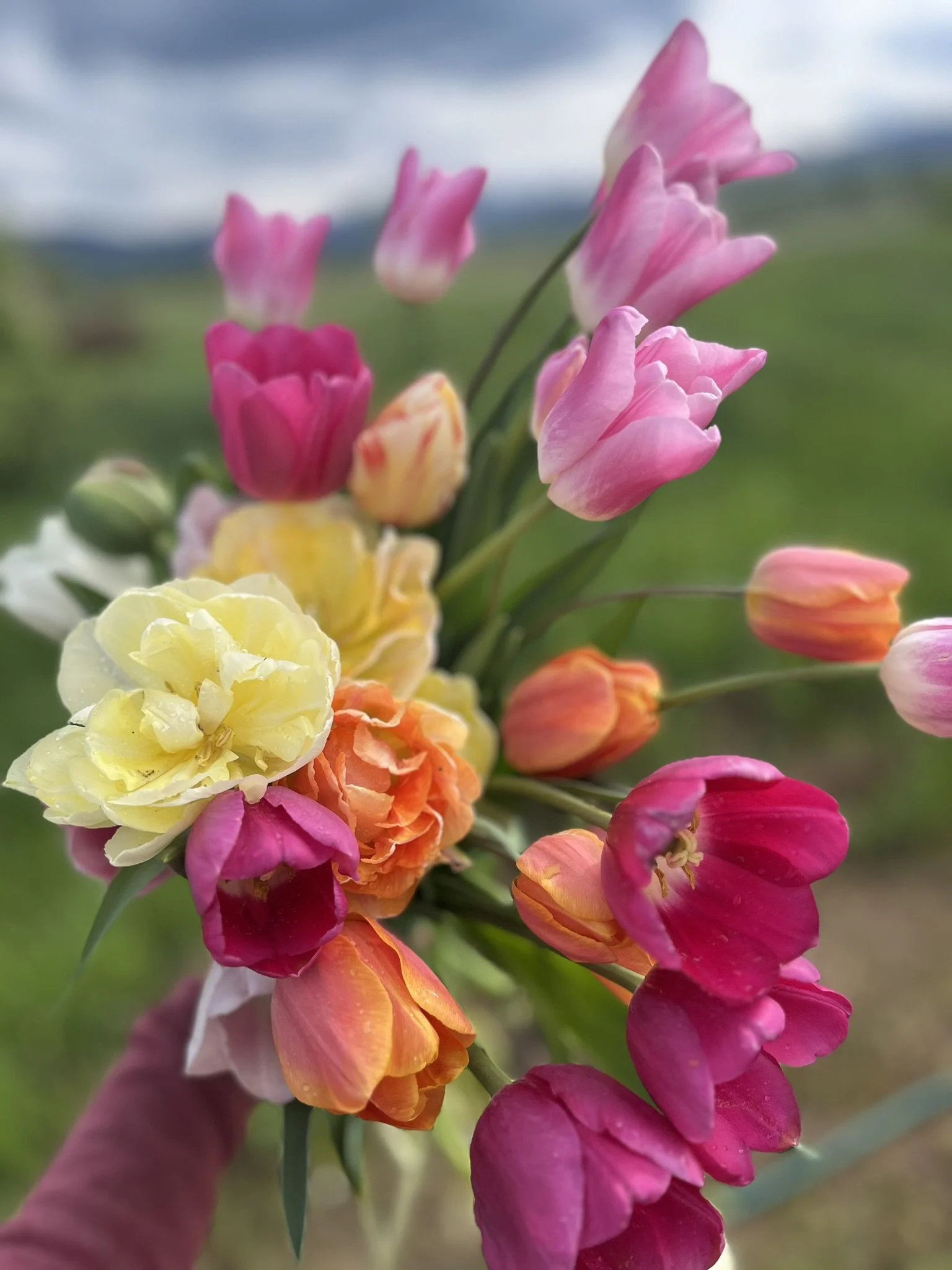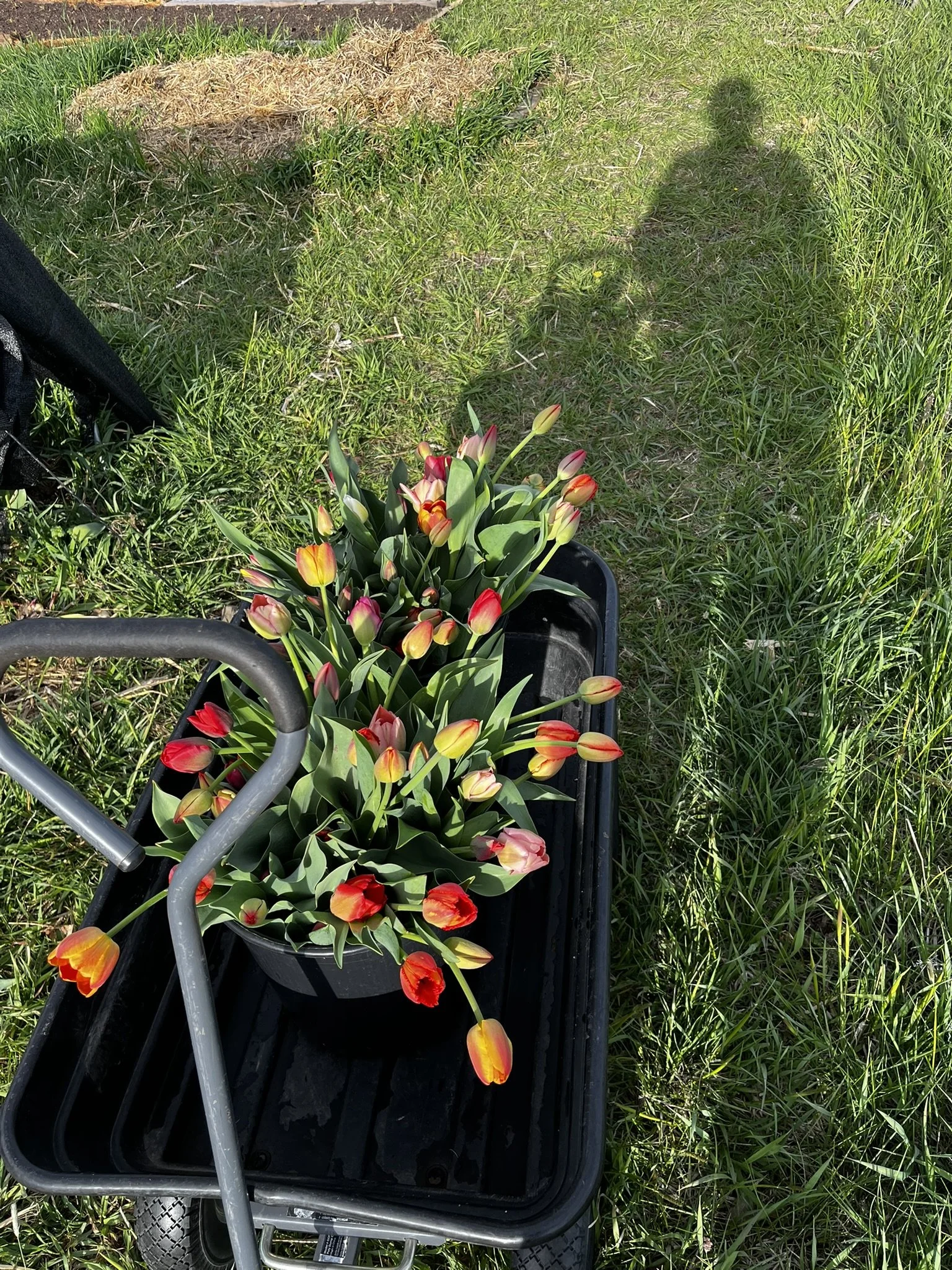Planting Instructions for Tulip Bulbs
Planting tulip bulbs is a great way to brighten up your landscape in spring.
1. Location and Soil Preparation
Sunlight: Tulips love full sunlight, but they can handle some part shade.
Soil: For tulips to grow their best, you'll need well-drained soil. You can add compost to enhance drainage and texture.
2. Planting the Bulbs
Timing: The ideal time to plant your tulip bulbs is in the fall, typically from mid-October to November.
Depth: Bulbs should be planted about 6" deep.
Spacing: Place bulbs 4 to 6 inches apart to allow them room to grow. Remember that tulips will often perennialize, so give them a bit of room to grow over time, and after a few years, you can split them. For a striking display, planting them in clusters is beautiful.
Orientation: Ideally, position the bulbs in the hole with the pointy end facing up, but they'll do fine if you dump them in, too.
3. Post-Planting Care
Watering: Give your newly planted bulbs a thorough watering to settle the soil around them if there is no moisture in the forecast. Only water if there are 3 to 5 days without rain, as tulips prefer to stay on the drier side.
Mulching: Consider adding a 2- to 3-inch layer of mulch over the bulbs. This not only insulates them against the cold winter air but also helps keep the soil moist. Leaves or straw are good options for mulch.
Protection: There are many home remedies for keeping pests away from your tulips, but to keep them from deer, consider placing them close to the house or behind fencing. Voles can be avoided by interplanting these with daffodils or alliums around tulips, and you can use deterrents like crushed gravel or specific repellents.







